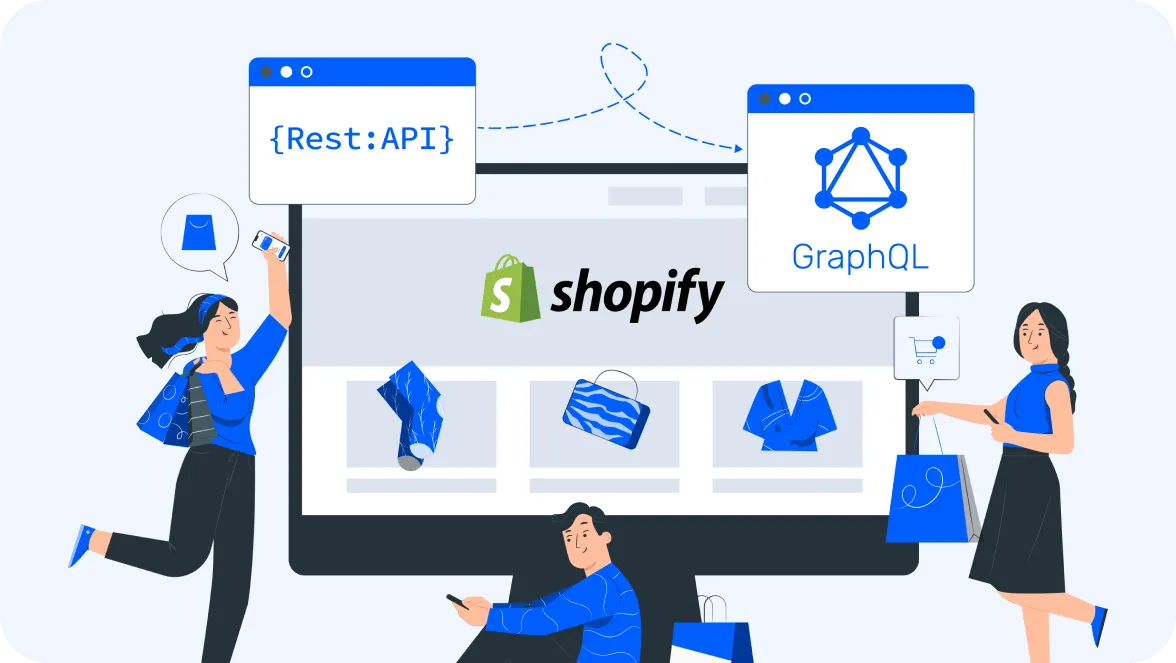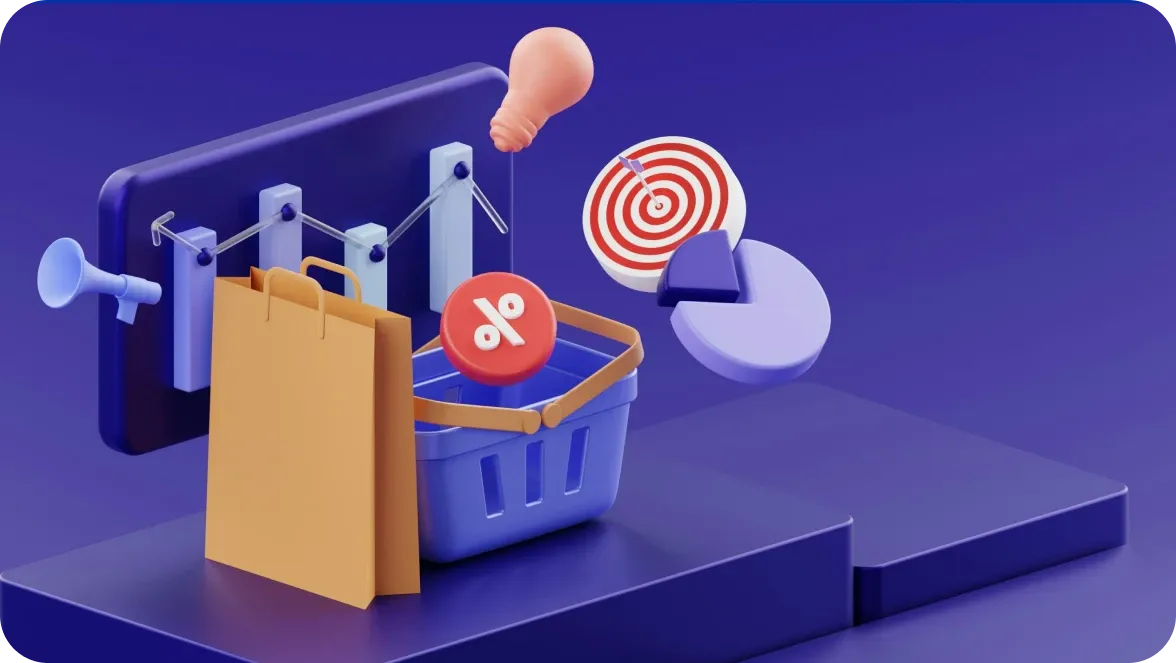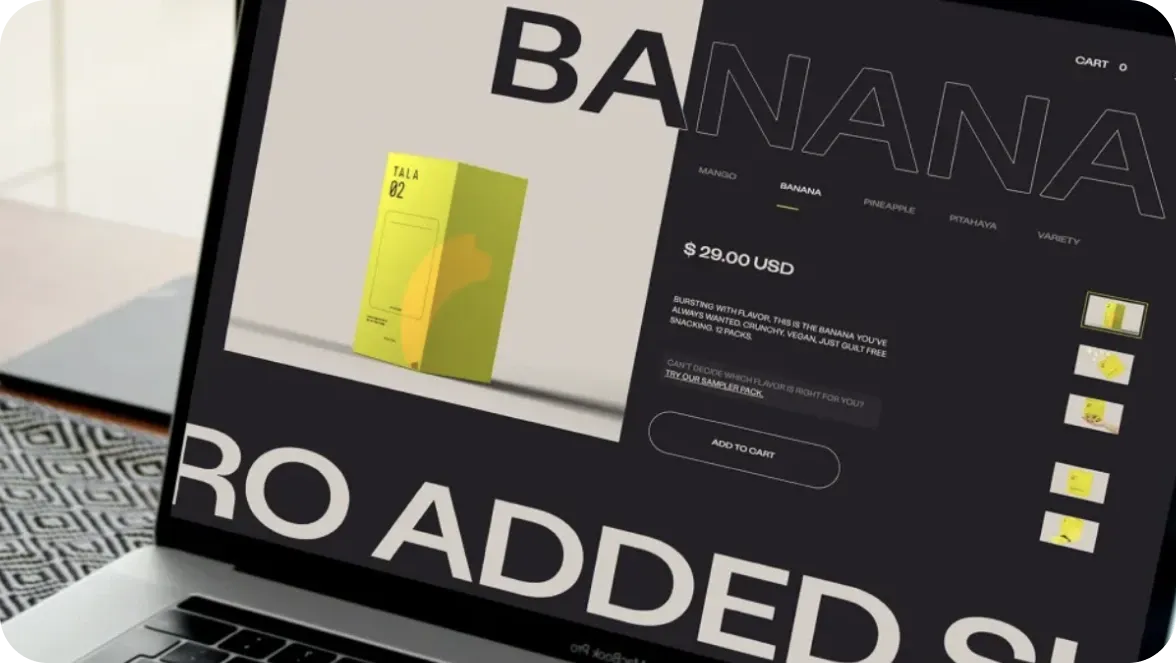
If you’re using Shopify POS for in-store operations, it’s time to adjust your system to accommodate the upcoming changes. On February 28, 2025, POS links, POS cart app extensions, and POS product recommendations will be deprecated. Starting from this date, developers and merchants will have no access to these extensions. Instead, you’re required to rebuild legacy extensions with new POS UI extensions. This article guides you through the steps for a smooth transition to Shopify POS UI Extensions.
What are POS UI Extensions and how do they work?
Roughly 30% of people still prefer in-store shopping. So point-of-sale (POS) systems for processing in-store operations remain essential for merchants who target this customer segment.

The Shopify POS system is among the most convenient. It allows you to manage in-store operations even with a smartphone. All that is needed is the Shopify POS application. As you grow, you can also add specialized POS hardware, including terminals and scanners. Still, the Shopify POS app is what will connect your online store with brick-and-mortar locations.
This app lets you streamline store management, sell products from different locations, accept payments, view customer information, and much more. However, what if you need to go beyond the default settings and POS functionality? That’s where Shopify POS UI extensions come in handy.
Shopify POS UI extensions let you add custom functionality to your POS system both through pre-built apps and custom solutions. This way, you can manage how your POS dashboard looks and which features are available there. For example, you can track and adjust inventory levels using pre-built apps like Stocky or apply custom discounts for orders by developing and adding tailored solutions.
In other words, POS UI extensions are similar to Shopify checkout UI extensions and work in almost the same way, giving you more flexibility for in-store shopping.
Why is Shopify deprecating POS links, POS cart app extensions and POS product recommendations?
Starting from October 2024, POS links, POS cart app extensions, and POS product recommendations cannot be created, and they will be fully deprecated on February 28, 2025.

Why did the Shopify team stop supporting these features?
The main reason is that Shopify is changing how its infrastructure works to optimize merchant workflows and improve the development experience. Deprecation of REST API and migration to GraphQL are part of these global changes. In a nutshell, the new way of POS customization allows for more opportunities and easier implementation of new features.
What happens if you don’t transition
If you don’t rebuild legacy extensions, you will not be able to view and access extended functionality, such as UI cards with discounts or product recommendations, in the POS interface.
The Shopify team recommends rebuilding this functionality using POS UI extensions before the deprecation date, especially since new extensions have robust functionality that will provide more customization opportunities.
Benefits of POS UI Extensions
Let's explore the legacy extensions first to understand the benefits of the new approach and how it differs from the previous one.
POS links allow you to link apps to specific pages of the Shopify POS app and display the link on these pages.
POS cart extensions let you manage loyalty programs and discounts in the cart. Once you enable an extension, your Shopify POS users will see the UI card with promotion actions on the cart screen.
POS product recommendations extension lets you display recommended products in the cart, customer profile, and product details pages in the POS interface. If your app doesn’t return any recommendations, the user sees the message “No recommendations available.”
New POS UI extensions work as a coherent solution instead. You can either install pre-built apps to extend POS functionality or use UI components, such as a DatePicker or Badge, to build any extension you need and add it to any place of your POS interface. You can add extensions to the product and customer details page as well as order details, post-purchase, and draft order screens. See all of the POS UI targets here. POS UI extensions also support APIs for flexible implementation and data access.
So, what are the tangible benefits of new POS UI extensions?
Quick implementation: You have multiple opportunities to rapidly extend your POS system, either by using pre-built apps compatible with Shopify POS or launching your app with tailored functionality.
Enhanced user experience: The new technology ensures a native look and feel within the Shopify POS app. It also streamlines workflows, allowing POS users to more easily complete their tasks and speed up the checkout process for in-store shoppers.
Improved integration: POS UI extensions align better with Shopify APIs and frameworks. Real-time access to cart, inventory, and customer data from the Shopify store ensures accuracy during operations.
Customization and flexibility: Support for complex workflows through interactive UI enables developers to tailor functionality to specific merchant needs. For example, you can use POS UI extensions for loyalty programs, inventory management, pickup and delivery scheduling, product bundling, team management, and much more.
Ongoing support and updates: New functionality is regularly updated and supported. The Shopify team continues to release new features compatible with the POS UI extension infrastructure.
How to migrate from Shopify POS Links to POS UI Extensions
To migrate from POS links and legacy extensions to new POS UI extensions, you first need to understand the Shopify POS UI extension framework. Get familiar with available components, APIs, and targets here. Then, proceed with the POS extension development guide. Once you have familiarized yourself with the tools and documentation, you can start migrating your POS functionality.
Audit existing features
Start by identifying workflows that currently rely on legacy POS extensions. Analyze the features you use for your POS interface and note any APIs and integrations involved. Then, document the POS UI elements and workflows and evaluate the custom logic you wish to replicate.
Design equivalents and enhancements
You can find equivalents for the deprecated features among pre-built apps or create custom alternatives. Shopify provides its POS UI Kit in Figma offering a library of components and styles.
It will simplify creating visual references and accelerate the development of your custom Shopify POS interface. This way, you can not just replace previous functionality but improve the look and feel of your POS system.
Develop and test your POS UI extension
Use the highest Shopify CLI version to create an app in your Shopify development store. Build your extension: recreate the user interface with UI components, replace legacy API calls with those supported in the new framework, and refactor custom logic. Make sure that you use the latest version of the POS UI extension. Once the development process is completed, test your app in Shopify POS.
Deploy and communicate
After migrating your POS functionality, deploy your app using Shopify CLI. Inform POS users of the new functionality and, if necessary, provide documentation for the new workflows.

How to migrate to POS UI extensions with a Shopify Partner?
Updating your Shopify POS might be overwhelming without proper development expertise, especially given tight deadlines. As a certified Shopify Partner, the DigitalSuits team offers app extension development services to help you add custom functionality to your Shopify POS infrastructure, customize checkout, and more.
What is our workflow for moving to POS UI extensions?
Send us a brief request using this form and we’ll contact you for more details about your project and its current condition.
After identifying your existing POS features and assessing requirements for migration and enhancements, we approve the scope of work and assign specialists with the relevant expertise.
We create a wireframe and develop POS UI extensions, using components, APIs, and best Shopify development practices.
After meticulous testing and connecting extensions with your POS interface, we disable the legacy extension and launch a release.
Our team continues supporting your project by monitoring its performance and resolving any post-migration issues.
Conclusions
Let’s sum up the main points for smooth transitioning from Shopify POS links to POS UI extensions.
POS links, POS cart app extensions, and POS product recommendations cannot be created anymore. Instead, you should use POS UI extensions.
Starting February 28, 2025, you won’t be able to view and use legacy extensions, so you need to migrate deprecated functionality using a new framework.
POS UI extensions are pre-built apps and custom solutions that ensure a more native user experience when using Shopify POS.
To migrate legacy extensions you need to audit your existing features and get familiar with POS UI documentation, components, and available APIs to rebuild functionality.
The POS UI Kit in Figma is a library of styles and components for designing POS extensions and interfaces.
Develop new POS UI extensions and release them once they work as expected in connection with your Shopify POS.
If any bottlenecks prevent you from completing the migration in time, contact our development team for assistance.







































Was this helpful?
0
No comments yet